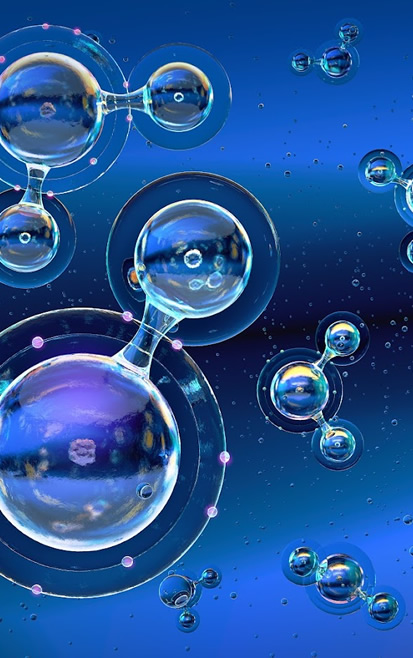
Dioxygen Chloride [O2Cl] (more traditionally known as Chlorine Dioxide [ClO2]) is a yellowish gas that was first synthesized in the United States in the early 19th century.
This chemical compound is formed thanks to the union of two molecules of oxygen and one of chlorine, and presents as an aqueous solution, thanks to its high degree of solubility in water, until a concentration of 1% is reached, at which time the solution is saturated.
Dioxygen Chloride is a stable molecule that remains as a gas dissolved in water, and does not decompose into free Chlorine when dissolved, thus preventing the creation of polluting by-products such as Chloramines, Haloacetic Acids, or Trihalomethanes.
The molecule is a paramagnetic radical, making it one of the most potent active disinfectant ingredients currently in existence. It is eight times more powerful than Chlorine and three times more so than Ozone, and is thus highly effective in tackling viruses, bacteria, fungi, molds, spores and biofilm.
Despite the fact that this active ingredient has failed to gain popularity in Spain, in other countries such as the USA, Germany or Italy, it is regularly used as a disinfectant to treat drinking water and in wastewater treatment processes.
The success of the product stems from the fact that, when it is applied, it alters cellular development, breaking the Krebs or citric acid cycle, thus eliminating pathogenic microorganisms without affecting living organisms or tissues.
The advantages offered by CLODOS compared with other disinfectants on the market were not discovered by chance, but are the result of extensive research and the continuous improvement of processes which have been ongoing for over 35 years:
✓ Meets all the requirements established in national (Spanish Royal Decree 1054/2002), European (Regulation [EC] No. 1907/2006 concerning the Registration, Evaluation, Authorisation and Restriction of Chemicals [REACH]) and international regulations (ADR, RID, IITT, IMDG).
✓ Effectively controls bacteria, viruses, fungi, larvae, spores and algae.
✓ There is no resistance to the product, nor is resistance developed over time.
✓ Does not create toxic by-products (THM, chloramines, AHA, etc.).
✓ Reduces odors by eliminating bacteria producing NH3 and H2S.
✓ Is between 4 and 10 times more effective than other disinfectants.
✓ Offers a high dispersion capacity, enabling it to reach complex and hard-to-access points (e.g., pipe elbows, blind spots, pores).
✓ Is 100% efficient in typical water pH ranges (pH 4-10).
✓ Offers a residual efficiency in treated water that protects it from recontamination.
✓ Does not increase water corrosivity in recommended usage doses.
✓ When used in the recommended doses, it does not transmit odor, color or flavor to water, nor to products in contact with it.
✓ 0-second safety time. Does not require rinsing as it does not leave any residue.
✓ Environmentally friendly.